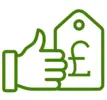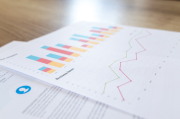Dear Recycling Bins: Nappies
- By Ian Barnes
- 20 Sep 2019

Dear Recycling Bins: Our Weekly Recycling Advice Column
Welcome to our weekly advice column where we look at all things recycling and give you the answers you’re desperately seeking.
Dear Recycling Bins,
I’m a new mum and I have to admit, I’m concerned about the impact of my baby’s disposable nappies on the environment. Disposable nappies are convenient, though they are expensive and made from plastic, I believe, so I know that once I put them in the bin, they’ll end up in landfill somewhere.
So I’d like some advice about reusable nappies. Are they really better for the environment, will they save me any money, and as a tired new mum, is constantly washing and drying them going to be worth my while?
Your sincerely,
Sleep deprived and seeking advice.
Dear Sleep Deprived,
Disposable nappies, though convenient, are very difficult to recycle. A staggering 3 billion nappies end up in landfill each year and the environmental impact of this is huge.
Disposable nappies are made from a thin waterproof plastic called polyethylene which can take up to 200 years to break down-that’s an awful lot of plastic lying around in landfill.
Reusable nappies are a more sustainable alternative that don’t use as many resources to produce and they’re cheaper in the long-run.
As far as reusables go, there are four main types:
Shaped nappies: These are cloth nappies that are shaped to fit around your baby, and they have a waterproof outer wrap. They are shaped like disposables and fasten with Velcro tabs or poppers.
All-in-one nappies: These are cloth nappies that are shaped like a disposable. The nappy and an outer waterproof cover are stitched together. These can take longer to dry but they are usually comfortable for baby.
Pre-fold nappies: These are basic, cotton, non-terry nappies that are folded into a rectangular shape and held on by a waterproof outer wrap. They don’t take long to dry but they don’t tend to be as absorbent as shaped or all-in-one nappies.
Terries: These are the cheapest and most basic reusable nappies available. They are squares that need to be folded into a triangular shape and then secured with a clip. They dry quickly but aren’t generally as absorbent as other types of reusable nappy.
If you think reusables might be an option, here are the need to know pros and cons:
- They are more environmentally friendly than disposables
- They are less expensive than disposables. In the time your little one is in nappies; you can expect to spend up to £1000 on nappies. Even when you consider the costs of the energy needed to wash reusables, they’re still cheaper in the long-run
- They don’t contain any substances or materials that could be harmful to a baby’s delicate skin like bleaching agents, dyes, and latex
- Less waste is sent to landfill when you use reusable nappies. It’s estimated that by using reusable nappies for just one child, parents could divert up to 874kg of waste from landfill
However…
- Reusables do need to be washed and dried which uses up a lot of energy, even more so if you use a tumble dryer. But if you use an energy-efficient washing machine and hang them on the washing line to dry, you can reduce the energy you use
- Washing and drying the nappies takes up precious time
- The little extras you need when you buy reusables, like wraps, clips, and liners, can really add up
We hope this helps!
Recycling Bins














